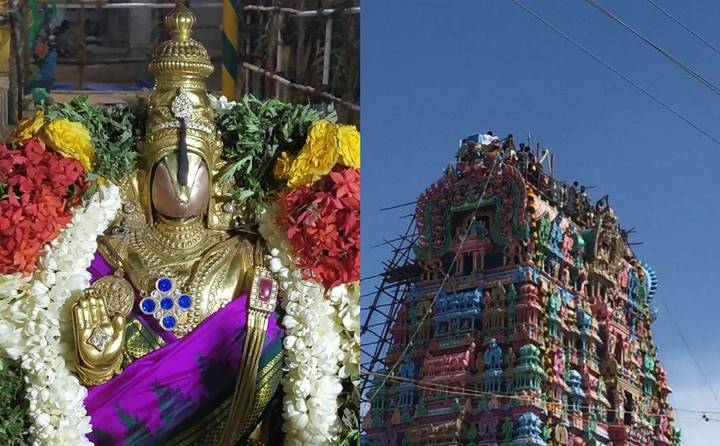Nanguneri Sri Vanamamalai Perumal Temple, Tirunelveli

Address
Nanguneri Sri Vanamamalai Perumal Temple, Nanguneri, Tirunelveli District, Phone no 04635 250119
Deity
Thothadrinathan, Amman: Vara Mangai Thayar
Introduction
- Vanamamalai Perumal Temple, also known as Arulmigu Sree Vanamamalai Totatri Perumal Temple, is dedicated to Lord Vishnu.
- Located in Nanguneri, Tamil Nadu, on the banks of the Thamiraparani River.
- The temple is one of the 108 Divya Desams glorified in the Divya Prabandham by the Azhwar saints (6th–9th century AD).
- Lord Vishnu is worshipped as Vanamalai Perumal, and Goddess Lakshmi as Varamanagi.
- Believed to have been built by the Pandyas, with later contributions from Vijayanagar kings and Madurai Nayaks.
- Covers 5 acres (20,000 m²) and features a five-tiered temple tower (Rajagopuram).
Puranic Significance
- Mentioned in Brahmanda Purana, Skanda Purana, and Narasimha Purana.
- Sage Narada learned about this sacred site from Lord Shiva.
- Legends associated with the temple:
- Goddess Lakshmi was born here as Srivaramangai, giving the place the name Varangunamangai.
- Adisesha, the serpent deity, performed penance here to serve as Vishnu’s resting place.
- Garuda, Vishnu’s vehicle, also performed penance and was granted the role of guarding Vaikunta.
- A childless king, Kaaarya, worshipped Vishnu here and was blessed with children. He built the temple and established an oil ablution ritual.
Historical Significance
- Earliest inscriptions date back to 1236 CE from Sundara Pandya I.
- Other inscriptions:
- 1275 CE (Kulasekara I) – Tax collection details.
- 1284 CE (Sundara Pandya II) – Land donation details.
- 1299 CE (Vikrama Pandya III) – Gift of land to the temple.
- 1305 CE – Gift of money to sculpt the image of Sadagopar.
- Came under Travancore kings, and administration was later entrusted to Vanamamalai Mutt (1447 CE).
- The idol of the goddess was brought from Tirupati, and priests were replaced by those from Tirupati.
- In the 17th century, the temple received help from Naik rulers for resolving local disputes.
- 1794 CE – Nawab of Carnatic, Abdul Umra, donated extensive lands to the temple.
Special Features
- The temple has a large five-tiered gopuram (gateway tower).
- Enclosed within two prakarams (closed precincts).
- Several pillared halls, including:
- Ardhamandapam and Mahamandapam (main halls).
- Festival hall in the second precinct, featuring sculpted pillars depicting Mahabharata legends.
- Main deity: Vanamamalai Perumal, seated on Adisesha (serpent).
- Sridevi and Bhoodevi flank Perumal inside the sanctum.
- The Thayar (Goddess) shrine is located in the second precinct.
- The second prakaram has pillared halls with sculpted depictions of Vishnu’s avatars.
Festivals
- The Chariot Festival (Brahmotsavam) is the most prominent, celebrated in Chittirai (March–April).
Century/Period/Age
1000 to 2000 years old
Managed By
Hindu Religious and Charitable Endowments (HRCE)
Nearest Bus Station
Nanguneri
Nearest Railway Station
Nanguneri
Nearest Airport
Tuticorin









